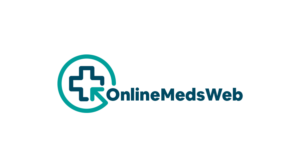Technology has brought tremendous changes to healthcare in recent years, from electronic medical records (EMRs) and telemedicine to advanced medical devices. When implemented properly, technology can really enhance both patient care and experiences by helping to streamline processes, improve communication and care coordination, reduce mistakes, and enable better outcomes.
Electronic Medical Records
A big area in which technology has revolutionized healthcare is through EMRs. EMRs create a digital record for each patient that can then be shared between providers, offering a comprehensive medical history from one location. This helps to avoid issues caused by scattered paper records, like incomplete histories, illegible handwriting, misplaced charts, and a lack of coordination across sites and providers.
EMRs massively help to facilitate communication and care coordination. All a patient’s providers can securely access the same up-to-date information about things like medical history, medications, allergies, test results, and more. According to the good folk over at Find-A-Code.com, this helps to improve safety and quality of care. EMRs also include computerized physician order entry for tests and medications, reducing mistakes that can occur from handwritten orders. Furthermore, EMRs enable the standardized use of medical terminology and codes like ICD-11 diagnosis codes. This facilitates complete and consistent documentation, reporting, research, billing, and more.
Health Information Exchanges
Building upon EMRs are health information exchanges (HIEs), which allow patient data to be shared securely across different healthcare organizations. If a patient happens to move, change providers, or visits urgent care or specialty clinics, their medical record information follows them digitally through the HIE ecosystem. This then further enhances care coordination and helps to reduce repetition of tests or medical history intake. Indeed, it offers providers a comprehensive view of a patient’s care.
Telemedicine and Remote Patient Monitoring
Other technology that is rapidly being adopted is telemedicine, which allows patients to consult physicians and specialists via phone or video from their home. Not only is this more convenient for patients, but it also expands access to care for rural populations away from medical centers. Following a virtual visit, physicians can use EMRs to order tests or prescriptions for pickup at a local facility. Telemedicine proved to be particularly essential during the COVID-19 pandemic to safely continue necessary care.
Remote patient monitoring is also on the rise, where internet-connected devices record patient health metrics like blood pressure, glucose levels, or oxygen saturation from home on an ongoing basis. Doctors can analyze the data streams to track recovery after procedures or monitor chronic conditions with no in-person hospital visits. Alerts can notify care teams to intervene if readings cross critical thresholds. This expands access while keeping patients out of medical facilities.
Artificial Intelligence
Looking ahead, artificial intelligence (AI) promises to take clinical decision support, personalized medicine, and improved patient outcomes to new levels. With access to vast databases of patient and medical research data, AI models can provide prompt diagnostic and treatment suggestions to doctors at the point of care based on patterns found across millions of similar cases. AI can also help predict the course of diseases and response to therapies personalized to the genomic makeup of individual patients. And chatbots powered by AI are being developed as virtual medical assistants to help guide patients through care.
Conclusion
Technology has already delivered major advancements in patient experiences, access to care, care coordination and outcomes. Current work focuses on optimizing systems for patient-centered design and equitable access across demographics and locations. And emerging AI breakthroughs represent a new frontier of improvements in speed, accuracy, and personalization of healthcare. Ultimately, when thoughtfully implemented, technology promises to radically streamline administrative workflows, empower patients, assist providers, and elevate the quality of healthcare to new heights.

